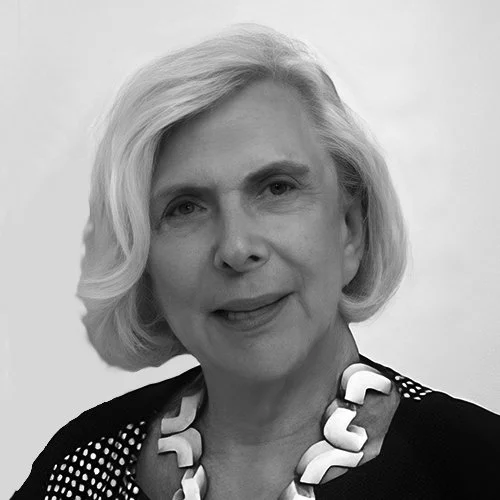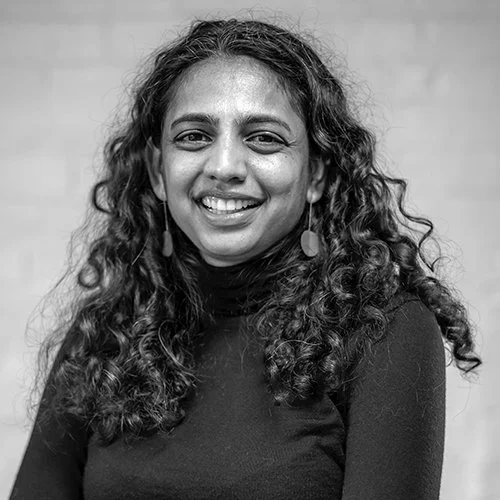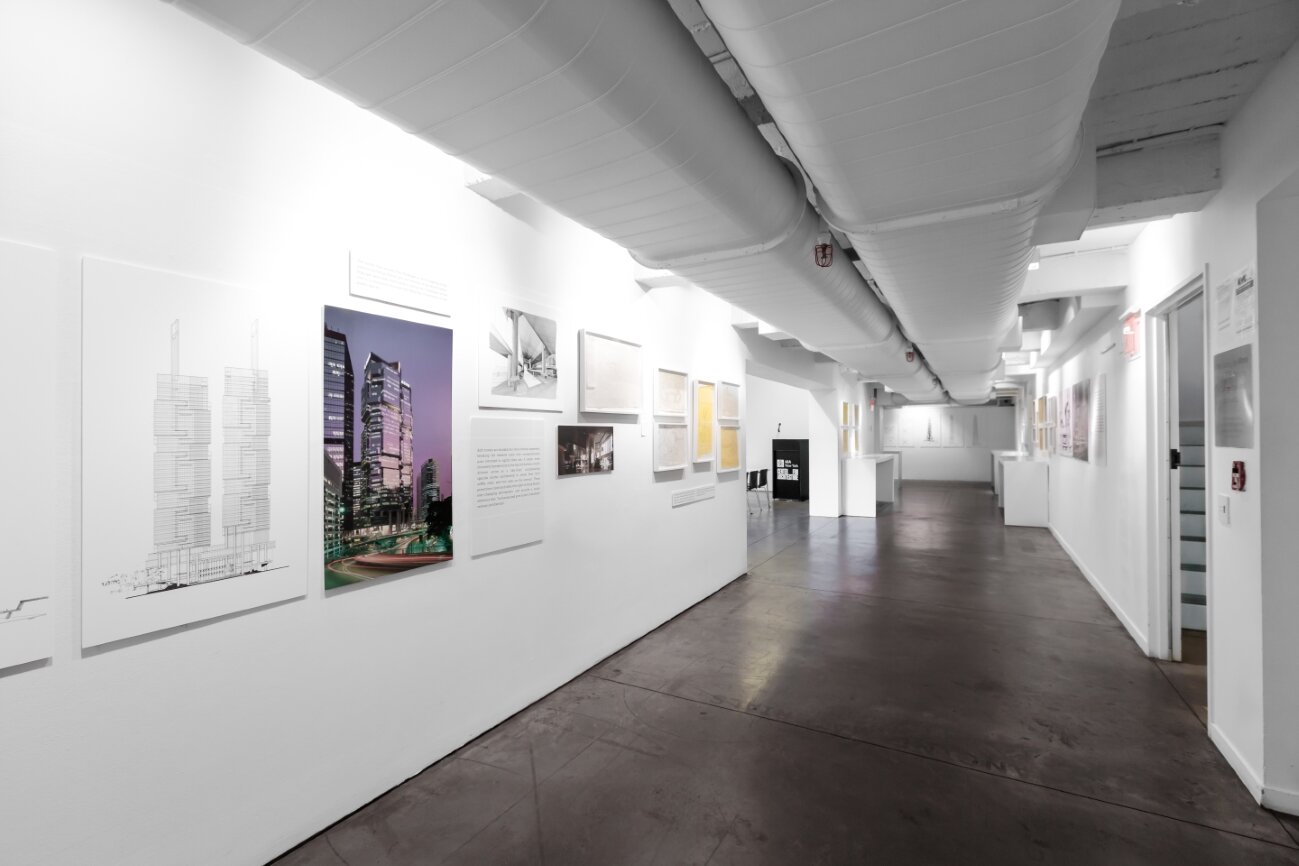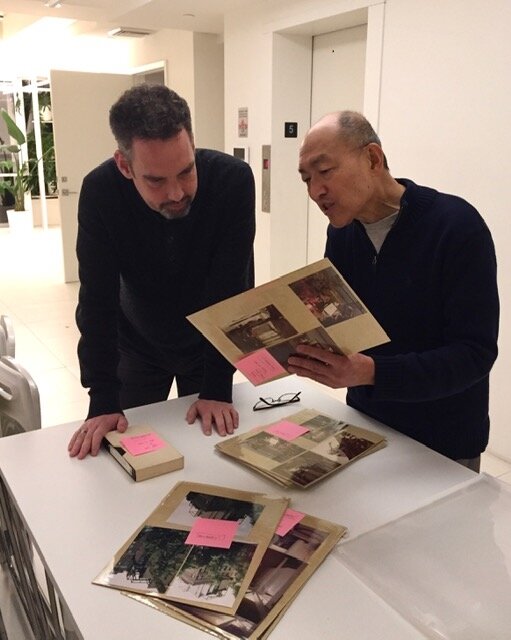The Paul Rudolph Institute for Modern Architecture was established to further the knowledge, understanding, and preservation of the work of Late Modernist architect & educator Paul Rudolph.
Through preservation and advocacy efforts, educational initiatives, public events and maintaining and developing an archive of written and graphic materials, the Institute seeks to communicate the legacy of this unique American Master in a larger architectural and cultural context to interested students, journalists, scholars, and the general public.
Our mission began From a personal promise to Paul Rudolph
Paul Rudolph & Ernst Wagner in 1975. Photo from the Paul Rudolph Heritage Foundation archives.
The Paul Rudolph Institute for Modern Architecture (formerly the Paul Rudolph Heritage Foundation) was founded by Ernst Wagner, a personal friend of Mr. Rudolph’s since 1974. Ernst Wagner and Rudolph lived and worked together until Rudolph’s death in 1997, and Rudolph named Mr. Wagner as the residual beneficiary of his Estate and his heir.
Rudolph, not satisfied with what he could find on the market, founded MODULIGHTOR in 1976 to design and build a new line of furniture, lighting, rugs and other interior design accessories that embraced Rudolph’s interest in modularity. Rudolph was very involved, designing everything from prototype fixtures to the layout of the company’s first marketing brochure, trade booth and showroom. Rudolph chose Mr. Wagner to run the company.
The company began assembling furniture and light fixtures in the model shop of Rudolph’s architectural office at 54 West 57th Street. When MODULIGHTOR’s work increased, the company moved to a new location in SoHo in 1981. In 1990, MODULIGHTOR moved to 246 East 58th Street, a building designed by Rudolph as the company’s headquarters and where Rudolph’s architectural office was located, thereby giving the location its name as the ‘Modulightor Building.’
In his lifetime, Mr. Rudolph requested the residence at 23 Beekman Place - where he and Mr. Wagner lived - become an architectural study and resource center for the design community of the New York metropolitan area. He also wanted an organization created to preserve his architectural legacy.
Mr. Wagner promised Rudolph to fulfill his wishes. He and several of the pair’s friends and associates created the Paul Rudolph Foundation in 2002 but were unable to secure the residence as a study center and it was later sold. Instead, Mr. Wagner opened the Modulightor Building to the public for events and tours to celebrate Rudolph’s life and legacy.
As the foundation grew, it added board members who did not personally know Mr. Rudolph or his wishes. The Paul Rudolph Foundation, following a disagreement over the group’s priorities, voted to remove Mr. Wagner from the organization in 2014 and subsequently moved out of the Modulightor Building.
Mr. Wagner, intent to keep his promise to Mr. Rudolph, created the Paul Rudolph Heritage Foundation with several of the original members of the Paul Rudolph Foundation. In 2022 the Paul Rudolph Heritage Foundation changed its name to The Paul Rudolph Institute for Modern Architecture, to expand its mission to provide outreach and information to educators, students, design professionals and the broader public interested in learning about the design principles of modern architecture exemplified in Paul Rudolph’s architectural work and teachings.
The Paul Rudolph Institute for Modern Architecture, under the guidance of Rudolph’s friends and associates, represents the Paul Rudolph Estate and is dedicated to fulfill his original wish to have an architectural study and resource center for the design community in his honor. A unique endeavor, the Paul Rudolph Institute for Modern Architecture is the only organization in New York City located in a building designed by - and dedicated to - the career of a singular 20th Century architect.
Paul Rudolph with students at 23 Beekman Place. Photo from the Paul Rudolph Estate archive.
A lecture by John Morris Dixon hosted by The Paul Rudolph Institute for Modern Architecture. Photo from The Paul Rudolph Institute for Modern Architecture archives.
The Paul Rudolph Institute for Modern Architecture space is open to the public for events and by appointment. In addition, the space is made available for rent as a location for special events, photo shoots, and videos; from which the proceeds benefit the foundation to keep its original promise to Paul Rudolph.
The Paul Rudolph Institute for Modern Architecture operates under IRS code section 501(c)(3) as a non-profit organization. Your contribution to the Foundation is always tax-deductible to the extent allowed by law.
Board of Directors
Kelvin Dickinson Jr.
President & CEO
Kelvin Dickinson Jr. graduated from the College of Design, Architecture, Art & Planning at the University of Cincinnati in 1996 and has been a lifelong fan of Mr. Rudolph’s work. He joined the Paul Rudolph Foundation in 2006 and became Co-Director from 2009-2010. After working overseas, he joined The Paul Rudolph Institute for Modern Architecture in 2017.
Santo Pusateri
Treasurer
Santo Pusateri worked in the Foreign Exchange and Money Market department of the Banca di Roma before becoming Assistant Treasurer at Banca Monte dei Paschi di Siena. In 2007 he received an Associate’s degree in Construction Management and a Bachelor of Facilities Management in 2008. He joined The Paul Rudolph Institute for Modern Architecture in 2015.
Judith York Newman
Board Member
Judith York Newman graduated with a degree in Architecture from Cornell University. A personal friend of Rudolph’s, she hosted an inaugural exhibition of his work at SPACED: Gallery of Architecture which she opened in 1979. She was a founding Advisory Board member of the Paul Rudolph Foundation in 2002, and joined The Paul Rudolph Institute for Modern Architecture in 2015.
Tim Hayduk
Board Member
Tim Hayduk graduated in 1994 with a degree in Architecture from Pratt Institute. His experience includes being a Museum Educator for the South Street Seaport Museum and is currently a Lead Design Educator for the NYC-based A.I.A. Center for Architecture. He joined The Paul Rudolph Institute for Modern Architecture in 2017.
June Goldfinger
Board Member
June Goldfinger studied at Parsons School of Design and opened a design firm in 1965 with her husband, the late architect Myron Goldfinger. He designed the exteriors and she did the interiors - from furniture and flatware to lighting and rugs. She later became an designer and manufacturer working in 17 different countries. She joined the Paul Rudolph Institute for Modern Architecture in 2024.
Eshaan Mehta
Student Board Member
Eshaan Mehta is an Architecture student at the Pratt Institute School of Architecture. He worked with Landmark Columbus Foundation in Columbus, Indiana, where he aided in the production of Exhibit Columbus. He is also an active member of Pratt SOA, being on the board of Pratt Futures, a student organization promoting and diverse student voices. He joined the Paul Rudolph Institute for Modern Architecture in 2022.
Susan Grant Lewin
Board Member
Susan Grant Lewin was architecture and design editor at both HFN, Fairchild Publications and House Beautiful Magazine. In the 1980s, she joined Formica Corporation as Creative Director and later started her own marketing and PR firm Susan Grant Lewin Associates. Lewin is also known as a prominent collector of contemporary art jewelry. She joined the Paul Rudolph Institute for Modern Architecture in 2025.
Hari Priya Rangarajan
Board Member
Hari Priya Rangarajan graduated from Columbia GSAPP in 2008 with an undergraduate degree in Architecture from RVCE in Bangalore. Her experience includes being a project manager at The Frick Collection, Frick Madison as well as the MIT Museum. She is a passionate advocate for cultural institutions and joined the Paul Rudolph Institute for Modern Architecture in 2025.
Advisory Council
Kelvin Dickinson Sr.
Kelvin Dickinson Sr. graduated from Harvard Law School in 1968. Following private practice, he joined the faculty at the University of Dayton School of Law in 1979 until retiring in 2007.
Julien Aleksandres
Julien Aleksandres graduated from the University of Kentucky and Parsons School of Design. He was MODULIGHTOR’s showroom manager from 2005 until 2014, when he left to open his own interior design office. He also owns WOWpapers, a custom wallpaper company based in Brooklyn, New York.
Emeritus Board
Ernst Wagner
Founder
Ernst Wagner was the Executor and Residual Beneficiary of the Paul Rudolph Estate. A close friend for almost 25 years, he lived with Rudolph at Beekman Place and owned Modulightor, the lighting company created by Rudolph in 1976. He founded the Paul Rudolph Foundation in 2001 and later The Paul Rudolph Institute for Modern Architecture in 2014.
The Paul Rudolph Estate Archive & Research Library
The Paul Rudolph Institute for Modern Architecture maintains the Paul Rudolph Estate Archive and is growing a collection of information about Paul Rudolph including press clippings, books, and various tangible or digital materials about or relating to Mr. Rudolph's own work, influences and the contemporary cultural context in which he lived and worked.
The Institute is digitally preserving a selection of photographs and articles related to Mr. Rudolph in a searchable database. With financial support, the Institute will professionally document, categorize, and present this and additional material in a cohesive manner for study by students, scholars, and the general public.
Materials from the Paul Rudolph Estate Archive at The Paul Rudolph Institute for Modern Architecture.
Materials from the Paul Rudolph Estate Archive at The Paul Rudolph Institute for Modern Architecture.
Preservation & Advocacy
The Paul Rudolph Institute for Modern Architecture advocates for the preservation and proper maintenance of buildings designed by Mr. Rudolph. Preservation is a key role in educating others on Mr. Rudolph's legacy through the direct experience of his built work. The Institute holds lectures, exhibitions, develops educational tours of buildings and makes suggestions for sensitive adaptive reuse and redevelopment schemes as alternatives to demolition.
The Paul Rudolph Institute for Modern Architecture President Kelvin Dickinson giving the keynote address at the symposium ‘Remembering Shoreline’ held at Rudolph’s Niagara Falls Public Library.
The Paul Rudolph Institute for Modern Architecture visiting the Shoreline Apartments in Buffalo, New York with local preservation advocates.
The Paul Rudolph Institute for Modern Architecture makes available, in a variety of forms, the material that is maintained and collected by the Institute. The Institute encourages, promotes, and is a catalyst for the further study of Mr. Rudolph's work and his times through involvement in or initiation of scholarly publications, lectures, exhibitions, newsletters, symposia and visits to Rudolph designed buildings and spaces.
‘Paul Rudolph: The Hong Kong Journey’ Exhibition sponsored by The Paul Rudolph Institute for Modern Architecture at the Center For Architecture in 2018. Photo: Erik Bardin
‘Paul Rudolph: The Personal Laboratory’ Exhibition sponsored by The Paul Rudolph Institute for Modern Architecture at the Modulightor Building in 2018. Photo: Matt Grubb
Carl Abbott, former Rudolph student and employee speaking at The Paul Rudolph Institute for Modern Architecture’s celebration of Paul Rudolph’s 100th birthday.
R.D. Chin, former Rudolph employee, donating materials to the Paul Rudolph Estate Archive
Roberto de Alba leading a panel discussion at the symposium ‘Paul Rudolph: A Way of Working’ organized by The Paul Rudolph Institute for Modern Architecture at the Center for Architecture.
Kate Wagner of McMansion Hell speaking at the symposium ‘Paul Rudolph: Influences & Opportunities’ organized by The Paul Rudolph Institute for Modern Architecture at the Center for Architecture.
Modulightor Building tours during Open House New York. Photo: David Hogarty
Giving a tour of the Paul Rudolph Duplex at Modulightor to Yale architectural students.
Funds are sought to continue working with other organizations such as DOCOMOMO (an international 20th Century preservation organization), the Library of Congress and other cultural organizations in New York City on publications, events and exhibitions exploring Rudolph's work, influences, and the architecture of the Late-Modernist era.
The Paul Rudolph Collection
As both an educational and fundraising tool, The Paul Rudolph Institute for Modern Architecture offers a selection of products for sale at the Paul Rudolph Store. The Store features books, furniture, lighting, and limited edition art that not only celebrate Paul Rudolph, but also the work he inspired. The profits from the sale of these items are devoted entirely to the Institute and its programs.































